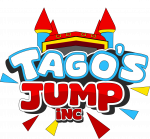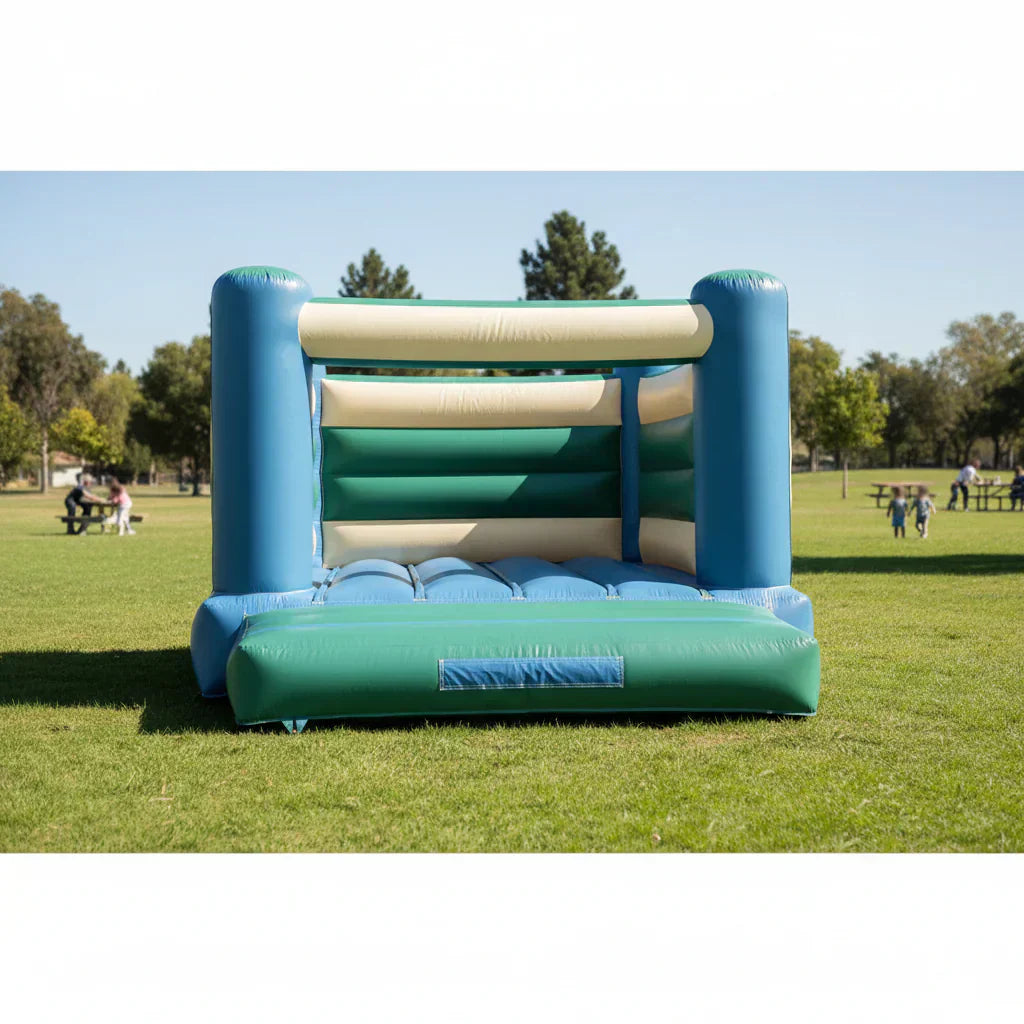If you’re shopping for commercial-grade inflatables, two names you’ll run into are Tagos Jump and Pogo. This guide compares the specs that actually affect revenue and downtime—materials, safety, warranty/after-sales, lead times, pricing, and long-term ROI—so you can choose with confidence.

Quick comparison checklist
| Area | What to check (per model) | Tagos Jump | Questions to ask Pogo |
|---|---|---|---|
| Vinyl & coatings | Body panels vinyl weight (target: ~18 oz for commercial), UV/mildew treatments | Commercial-grade options; spec sheets on request | Is weight listed for body panels or patches? Any anti-UV/anti-mildew treatment? |
| Seams & stress points | Double/triple stitching, interior reinforcements, high-stress patching | Reinforced seams and stress-point focus on rental staples | Where are reinforcements placed (columns/entry/slide landing)? |
| Safety & compliance | Fire-retardant testing, anchor count, mesh visibility, blower spec | Safety docs provided; standard anchor layouts | Which tests/docs per unit? Compatible blower HP and listing? |
| Lead times & shipping | In-stock vs made-to-order, freight method, palletization | Quote with ETA; freight arranged to your location | In stock or build ETA? Who manages damage claims? |
| Warranty & service | Seam/vinyl coverage, exclusions, response time, spare parts | Competitive coverage; parts and repair support | What’s covered/excluded? Typical turnaround for parts? |
| Themes & add-ons | Rentable themes, replaceable slide liners, banner systems | Core rental themes (combos, slides, classics) | Are liners/banners replaceable or swappable? |
| Price & ROI | Price band vs weekly rate, seasonal demand | Positioned for rental ROI | Payback period at your local rate? |

Specs vary by model and batch. Always review the current spec sheet before purchase.
1) Durability that survives busy weekends
Why it matters: every extra repair day is a lost rental. Two details make the difference:
- Vinyl weight & treatment. For commercial inflatables, look for ~18-oz PVC/vinyl on main body panels, plus UV/mildew coatings.
- Seam construction & reinforcements. Double/triple stitching and reinforced stress points at entries, columns and slide landings reduce failures.
Tagos Jump approach: rental-focused designs emphasize high-wear areas with reinforced seam paths. Ask for the spec sheet of any SKU you’re considering.
What to verify on a Pogo unit: request body-panel vinyl weight, photos of seam work, and reinforcement map.
2) Safety & compliance you can show your insurance
- Fire-retardant testing. Confirm the actual test/cert provided for the model (e.g., testing against NFPA 701).
- Anchoring. Anchor point count & placement must match footprint and wind guidance on the label.
- Blower compatibility. HP rating, plug type/listing, and mesh visibility for attendants.
Tagos Jump: safety documentation per model and standard anchor layouts, plus blower specs required.
3) Themes, modules, and parts availability
High-rotation themes rent week after week; add a few “wow” pieces (combos, water slides) for peak season.
- Replaceable parts (slide liners, netting, steps/handles) keep units rentable while planning repairs.
- Modular banners let you test themes without buying a whole new unit.
4) Lead times & shipping reality
- Stock status & ETA: in stock or made-to-order? What’s the build window?
- Freight plan: curbside vs terminal pickup, palletization, and photo-before-signing for claims.
5) Warranty & after-sales support
Focus on seam/vinyl coverage, exclusions, response times, and parts availability. Ask both brands for their warranty PDF and typical turnaround.
6) Price bands & realistic ROI
Your business math should include purchase price (unit + blower + freight), weekly rental rate, utilization, and maintenance.
Simple ROI example: If a combo costs $2,800 delivered and rents at $225/week, break-even is ~13 rentals (not counting cleaning/transport).
7) Who should choose what?
- Choose Tagos Jump for rental-first builds, transparent specs, and a catalog covering combos, bounce houses, and water slides.
- Consider Pogo if a specific theme/bundle matches your calendar—verify materials and warranty.
Pro tips for new and growing operators
- Start with staples: one combo + one classic bounce + one water slide covers most weekends.
- Photograph everything on day one—helps with warranty support.
- Create a cleaning routine and keep patch kits/liners in stock.
- Use a pre-/post-rental inspection checklist to reduce disputes.
FAQs
What does “commercial-grade” really mean?
Commercial units typically use heavier vinyl (≈18-oz) on body panels, reinforced seams, robust anchor layouts, and safety documentation appropriate for events and insurers.
Is 18-oz vinyl mandatory?
It’s a common target for main body panels because it balances durability and weight. Lighter vinyl can appear on non-load areas—always verify panel weights on the model’s spec sheet.
What blower should I use?
Follow the model’s spec sheet. Many bounce houses use 1–1.5 HP blowers; larger combos or slides may require more. Use UL/ETL-listed blowers and dedicated circuits per local code.
How long does a commercial unit last?
With correct anchoring, cleaning, and storage, operators commonly run units for multiple seasons. Durability depends on materials, seam quality, and care.
How do warranties differ?
Compare coverage of seams and vinyl, exclusions, and response times. Ask both brands for their warranty PDF and typical turnaround for parts or repairs.
Are replacement parts available?
Ask about slide liners, netting, steps/handles, and patch kits. Keeping parts on hand reduces downtime between rentals.

